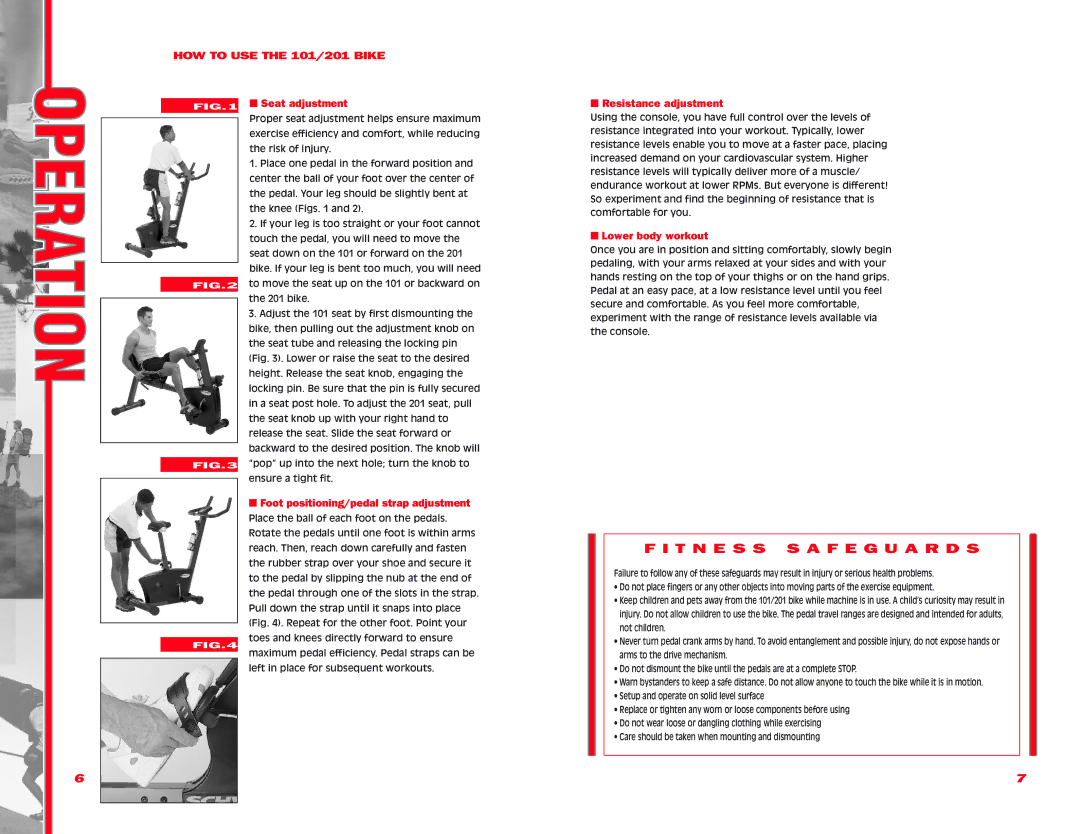101/201 specifications
The Schwinn 101 and 201 are popular exercise bikes designed to meet the needs of fitness enthusiasts who desire a comfortable and effective workout experience at home. These bikes are known for their straightforward designs and essential features, making them suitable for users of varying fitness levels.The Schwinn 101 is primarily focused on providing a reliable stationary biking experience. It features a user-friendly console that displays crucial workout metrics including time, speed, distance, calories burned, and heart rate. The heart rate monitoring can be done through contact grips that are built into the handlebars, allowing for real-time feedback during workouts. The bike is equipped with a manual resistance adjustment, enabling users to modify their workout intensity according to personal fitness goals.
In contrast, the Schwinn 201 offers more advanced technological features. One standout characteristic of the Schwinn 201 is its 16 levels of magnetic resistance, allowing for a smoother and quieter cycling experience. This feature enhances user experience by providing a more comprehensive range of workouts. The console on the Schwinn 201 is also more elaborate, as it includes built-in workout programs that keep users motivated and help track progress over time. With features such as goal tracking, the Schwinn 201 encourages users to set specific targets and achieve them.
Both models prioritize comfort, having ergonomically designed seats that can be adjusted to suit different body types. The adjustable pedals ensure that users can find the perfect position while cycling, reducing strain and promoting a healthier riding posture. The sturdy frames of both models provide durability while ensuring stability, which is essential during intense workouts.
Mobility is also a consideration in both Schwinn models, as they come with transport wheels that make it easy to move the bikes in and out of storage. Additionally, the compact designs of both bikes make them ideal for home use, even in smaller living spaces.
Overall, the Schwinn 101 and 201 embody convenience and performance. While the 101 serves as a solid, straightforward option for those new to cycling workouts, the 201 caters to users seeking enhanced features and versatility in their home exercise routines. Whether you’re a beginner or a seasoned cyclist, either model can help you achieve your fitness goals in the comfort of your home.

